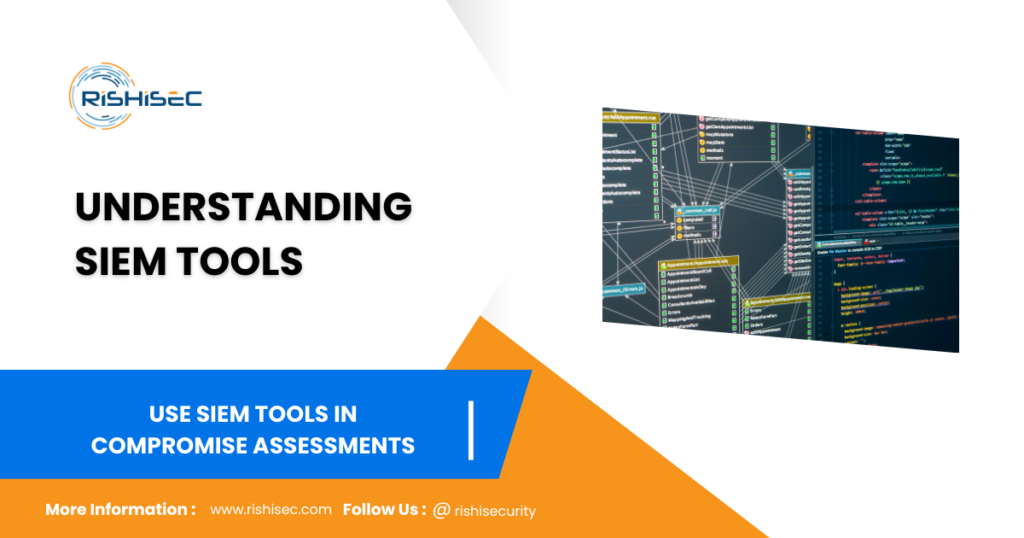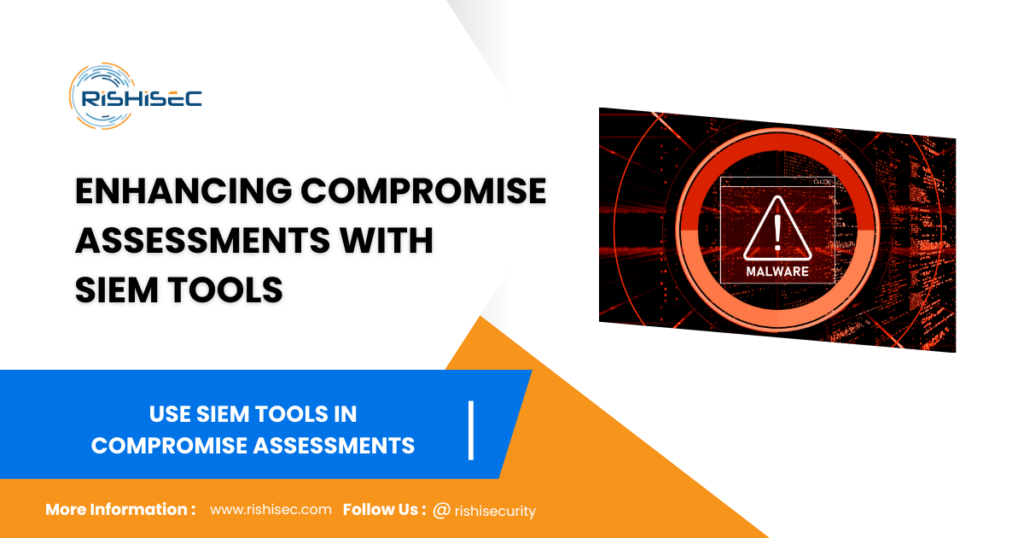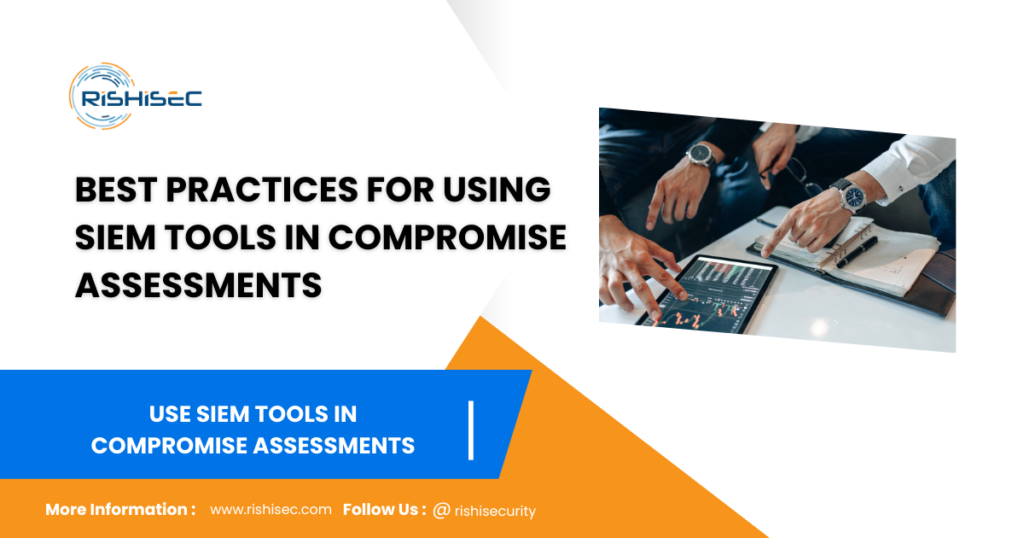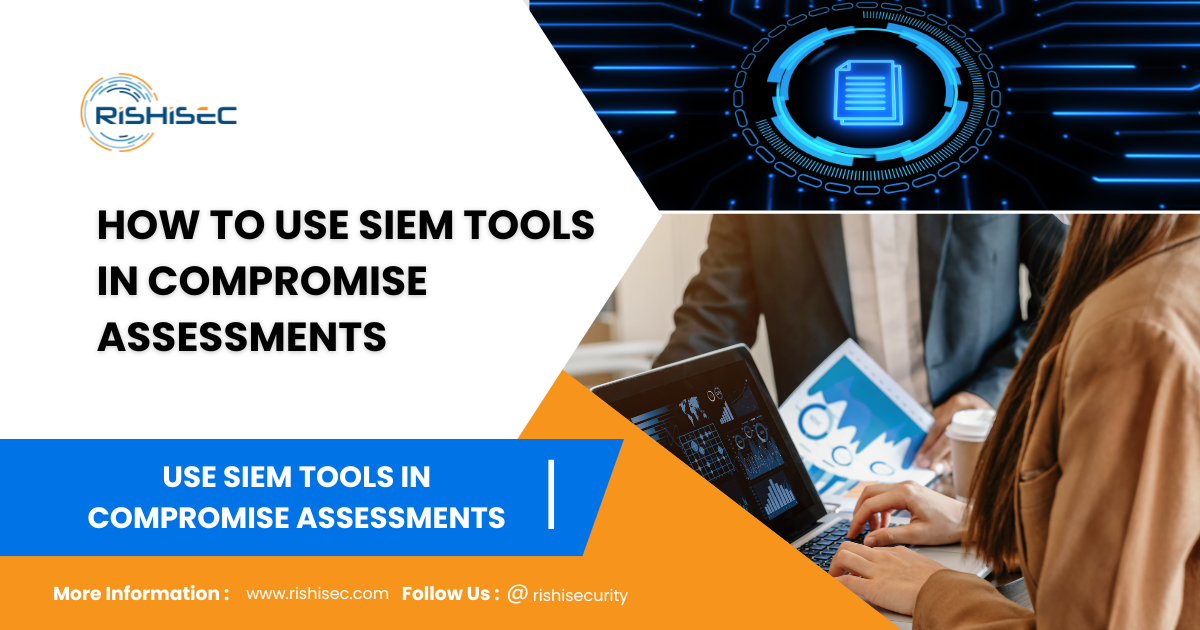In today’s rapidly evolving digital landscape, compromise assessments are crucial for identifying and mitigating potential security threats. One of the most powerful tools in this process is Security Information and Event Management (SIEM) systems. These tools offer comprehensive visibility into your IT environment, enabling you to detect, analyze, and respond to potential threats effectively. This blog post will explore how to leverage SIEM tools in compromise assessments to enhance your organization’s cybersecurity posture.
Contents
Understanding SIEM Tools

SIEM tools aggregate and analyze security data from across your network. By collecting logs and event data from various sources such as servers, databases, and applications, SIEM systems provide a centralized view of security events. This aggregation helps in identifying patterns and anomalies that may indicate a compromise. Key functionalities of SIEM tools include:
- Log Management: Collects and stores log data from various sources.
- Event Correlation: Analyzes and correlates events to detect suspicious activities.
- Alerting: Generates alerts based on predefined rules and thresholds.
- Reporting: Provides detailed reports for compliance and forensic analysis.
Enhancing Compromise Assessments with SIEM Tools

1. Centralized Data Collection
Effective compromise assessments rely on comprehensive data collection. SIEM tools excel in aggregating data from disparate sources, providing a unified view of security events. This centralized data collection enables you to analyze and correlate events across your entire IT environment, leading to more accurate detection of potential threats.
Example: Suppose a SIEM tool receives logs from both your web server and database server. By correlating these logs, the SIEM system can identify unusual patterns, such as a sudden spike in database queries following a web server vulnerability scan. This correlation helps in detecting potential exploits or attacks that might go unnoticed if analyzed in isolation.
2. Real-time Threat Detection
SIEM tools are designed to provide real-time analysis of security events. This capability is essential for identifying and responding to threats promptly. With real-time monitoring, SIEM systems can detect anomalies that deviate from normal behavior, such as unusual login attempts or unauthorized access to sensitive data.
Example: A SIEM tool might detect a series of failed login attempts from an unusual IP address. This anomaly could indicate a brute-force attack. The tool can then trigger an alert, allowing your security team to investigate and mitigate the threat before it escalates.
3. Advanced Analytics and Machine Learning
Modern SIEM tools incorporate advanced analytics and machine learning algorithms to enhance threat detection. These technologies can identify sophisticated attacks that may not be detectable through traditional rule-based methods. By leveraging machine learning, SIEM systems can adapt to evolving threats and provide more accurate detection.
Example: A SIEM tool using machine learning might identify subtle patterns indicative of a zero-day exploit. By analyzing historical data and recognizing deviations from normal behavior, the tool can alert your security team to potential threats that traditional methods might miss.
4. Integration with Other Security Tools
SIEM tools are often integrated with other security solutions, such as intrusion detection systems (IDS) and firewalls. This integration enhances the effectiveness of compromise assessments by providing a more comprehensive view of security events. By correlating data from multiple sources, SIEM systems can provide deeper insights into potential threats.
Example: Integration between a SIEM tool and an IDS can enhance threat detection capabilities. If the IDS detects suspicious network traffic, the SIEM system can correlate this data with other logs, such as failed login attempts or unusual file access, to identify potential attacks.
5. Streamlined Incident Response
Efficient incident response is a critical component of compromise assessments. SIEM tools streamline the incident response process by providing actionable insights and automating responses. With features such as automated alerting and incident tracking, SIEM systems can help your security team respond to threats more effectively.
Example: When a SIEM tool detects a potential threat, it can automatically trigger predefined response actions, such as isolating affected systems or blocking malicious IP addresses. This automation accelerates the response process and reduces the risk of further damage.
Best Practices for Using SIEM Tools in Compromise Assessments

- Regularly Update SIEM Rules and Policies: Ensure that your SIEM tool’s rules and policies are up-to-date to detect the latest threats.
- Tune Alerting Mechanisms: Fine-tune alerting thresholds to reduce false positives and ensure that alerts are actionable.
- Continuously Monitor and Review Data: Regularly review SIEM data and adjust configurations as needed to maintain optimal performance.
- Train Your Team: Ensure that your security team is trained to interpret SIEM data and respond to alerts effectively.
Conclusion
SIEM tools play a vital role in compromise assessments by providing centralized data collection, real-time threat detection, advanced analytics, and streamlined incident response. By leveraging these capabilities, organizations can enhance their ability to detect and respond to security threats, ultimately strengthening their cybersecurity posture.
CTA: Elevate Your Compromise Assessments with SentryCA: Start Your Free Trial Today!
For those looking to integrate SIEM tools into their compromise assessment strategy, a free trial of SentryCA’s comprehensive security solutions can provide valuable insights and support. Discover how SentryCA can help you improve your cybersecurity posture and safeguard your digital assets. Start your free trial today and experience the difference.
Continue reading our this post, Deep Dive into Tactical and Actionable Strategies for Reducing Your Attack Surface


